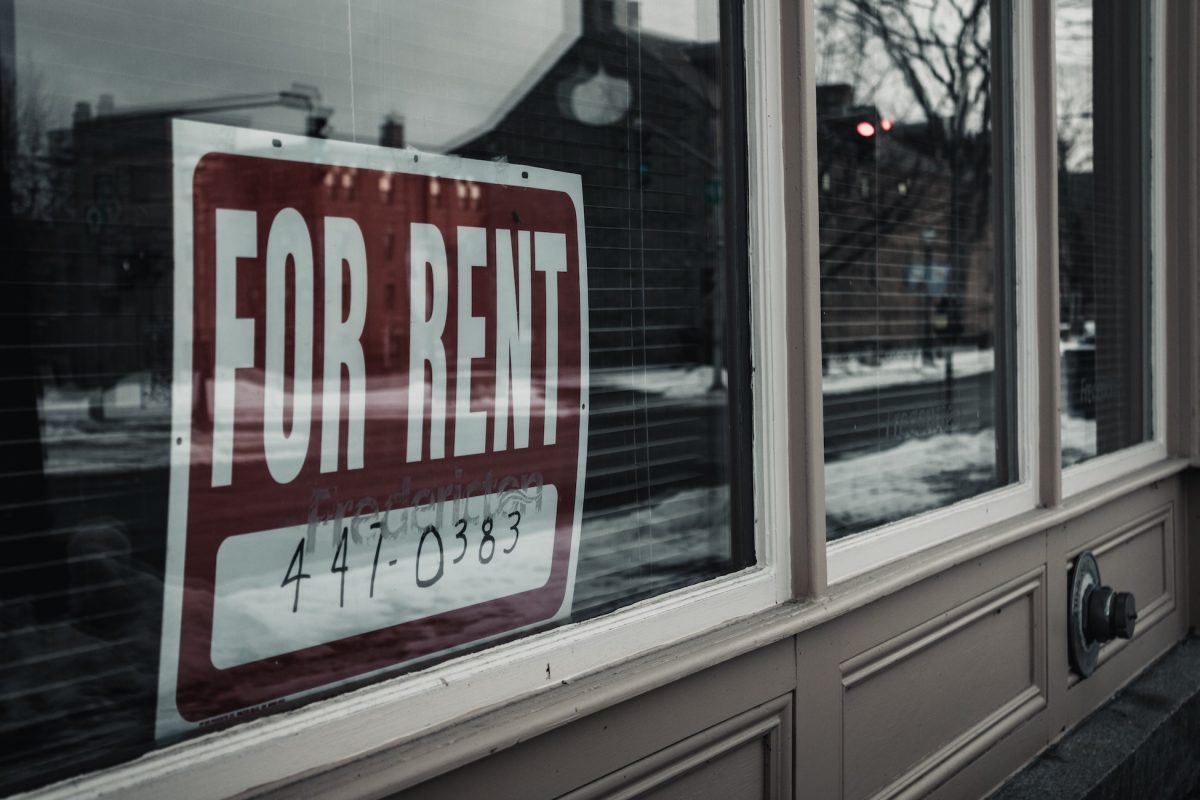Ever wondered how to transform your wildest home-building dreams into a tangible, brick-and-mortar reality without breaking the bank? Construction loans are the unsung heroes behind the scenes, fueling ambitious projects from custom dream homes to boutique commercial spaces. In this guide, we’re diving deep into the world of construction financing, unpacking every twist and turn—from the nitty-gritty of loan application processes to the unique terms that make these loans a rollercoaster ride for even the savviest millennial or Gen Z investor.
How Do Construction Loans Work Table of Contents
Understanding Construction Loans: The Blueprint for Your Dream Project
How Construction Loans Work: From Groundbreaking to Grand Opening
Types of Construction Loans: Your Financing Options Uncovered
The Application Process: Laying a Solid Foundation for Your Loan
Key Considerations and Terms: Navigating the Loan Lingo
Pros and Cons of Construction Loans: Weighing Your Options
Tips and Tricks for Securing the Best Construction Loan
Future Trends: Digital Tools and Innovations in Construction Financing
Resources and Community Support: Your Next Steps Toward Construction Mastery
Real-Life Success Stories: Construction Loan Journeys That Inspire
Avoiding Pitfalls: Lessons Learned on the Construction Journey
Your Roadmap to Construction Success: Crafting an Action Plan
Your Roadmap to a Successful Build: Taking the Leap
Understanding Construction Loans: The Blueprint for Your Dream Project
Building a house isn’t just about picking out countertops or scrolling through Pinterest for the perfect design inspiration. It’s about creating something from the ground up, and that’s where construction loans come into play. Unlike traditional mortgages, these loans are designed to fund the construction process itself—from acquiring the property and buying materials to paying contractors along the way.
At their core, construction loans are short-term, high-intensity financing options that provide the capital needed during the building phase. Once construction is complete, these loans are often converted into permanent mortgages, making them a unique two-in-one deal. Think of it as your financial tool that not only gets you started but also stays with you long after the blueprint is turned into a built reality.
Whether you’re a first-time homebuilder or a seasoned real estate investor, understanding how construction loans work is crucial. They come with their own set of requirements, terms, and a touch of complexity that sets them apart from regular financing options. But don’t worry—we’re here to break it down in a way that’s as engaging and straightforward as your favorite binge-worthy series.
How Construction Loans Work: From Groundbreaking to Grand Opening
Picture this: you’re at a construction site, wearing a hard hat that’s a bit too large, feeling the excitement of turning your vision into reality. The foundation is being poured, the walls are rising, and somewhere in the background, a construction loan is making sure every nail and beam is accounted for. Construction loans operate on a distinct timeline that closely follows the project milestones.
Unlike traditional loans that disburse a lump sum upfront, construction loans are typically issued as a series of drawdowns based on the progress of your project. Here’s how it works:
- Initial Approval: Once you’re pre-approved for a construction loan, lenders review your project plans, budget, and timeline.
- Draw Schedule: Instead of receiving all the money at once, funds are disbursed in increments, known as draws, which align with completed phases of construction. This could be after finishing the foundation, framing, roofing, and so forth.
- Interest-Only Period: During construction, you often pay only the interest on the amounts drawn, which can make monthly payments more manageable while you wait for the full build to be completed.
- Conversion to Permanent Financing: Once construction wraps up, you may have the option to convert your construction loan into a regular mortgage that covers the remaining balance over a longer term.
This step-by-step disbursement method ensures that funds are available when needed, reducing risk for both the lender and the borrower. It also means that staying on schedule is pivotal for your financial stability during the construction phase—delays might mean paying more interest or even risking additional fees.
Types of Construction Loans: Your Financing Options Uncovered
Just as there are countless design styles for your dream home, there are several types of construction loans to suit different project needs and personal financial situations. Broadly speaking, the two main varieties are construction-to-permanent loans and stand-alone construction loans.
Construction-to-Permanent Loans
These loans offer a seamless transition from the construction phase to permanent financing. With a single application process, you secure funds for building your home and, once complete, automatically convert the construction loan to a fixed-rate mortgage. This option minimizes the paperwork and hassle, making it a popular choice for those seeking a smooth ride through the financing journey.
Stand-Alone Construction Loans
Sometimes referred to as “construction-only loans,” these require you to pay off the total loan amount at the end of your build, often through a short-term financing solution. Once the construction is complete, you’ll need to secure a separate mortgage to pay off the construction loan. This option might be ideal if you plan to refinance quickly or if your lender prefers to keep construction financing separate.
Each type of loan comes with its own set of pros and cons. While construction-to-permanent loans simplify the transition, stand-alone construction loans might offer more flexible terms for projects that don’t fit the conventional mold. Choosing the right one depends on your project specifics, creditworthiness, and long-term financial goals.
The Application Process: Laying a Solid Foundation for Your Loan
Applying for a construction loan can feel a bit like preparing for a triathlon—there’s a lot to do, but taking it step-by-step makes all the difference. The process can be segmented into several key phases:
1. Pre-Qualification and Research
Before you even pick up your phone to call a lender, it’s time for some homework. Start by researching your options, comparing interest rates, and gathering initial quotes. The pre-qualification process gives you an idea of how much you can borrow and what types of loans might be available, setting you up for success when you officially apply.
2. Detailed Project Plans
Lenders will want a comprehensive blueprint of your project. This means submitting detailed construction plans, an accurate project timeline, and a realistic budget. They’ll scrutinize your contractor’s credentials, estimated costs, and even your contingency strategies. If you can prove your project is viable down to the last nail, you’re already winning points with your lender.
3. Documentation and Financial Evaluation
Just like applying for a regular mortgage, you’ll need to provide a raft of financial documents. This includes tax returns, bank statements, proof of income, and credit history. Lenders assess these details meticulously, looking for consistency and stability in your finances. They want to be sure you’re ready to handle not just the loan repayments, but the unexpected curveballs construction projects tend to throw your way.
4. The Draw Schedule Blueprint
Once approved, you’ll work with your lender to set up a draw schedule. This schedule outlines when and how funds will be released, based on completed project milestones. Staying on track with your construction timeline isn’t just a matter of pride—it’s financially vital!
The application process might feel lengthy, but thorough preparation is key. The better your project plan and financial documentation, the smoother the process will be—and hey, who doesn’t love a bit of order when working on something as ambitious as building their own home?
Key Considerations and Terms: Navigating the Loan Lingo
The world of construction loans comes with its own dialect—and while it might seem like a foreign language at first, getting familiar with the terms will save you from some serious financial faux pas later on. Here are some key terms and concepts you’ll encounter:
- Draw Schedule: The timeline that outlines when funds are released during the construction process. Each draw corresponds to a completed project phase.
- Interest-Only Payments: During the construction phase, many loans require payments solely on the interest accumulated on the drawn amounts, rather than the principal.
- Loan-to-Value (LTV) Ratio: This ratio compares the loan amount to the appraised value of the property. Lenders use this to assess risk, often requiring a lower LTV ratio for construction projects than for traditional mortgages.
- Contingency Funds: Extra funds set aside for unexpected expenses or overruns in the construction budget. It’s like the safety net for when construction decides to throw in an extra surprise.
- Conversion: The process of converting your construction loan to a permanent mortgage once construction is complete.
Understanding these terms is essential for negotiating the best deal and keeping surprises (the unwelcome kind) at bay. Essentially, the more savvy you are about construction loan lingo, the better you can control your project’s financial destiny.
Pros and Cons of Construction Loans: Weighing Your Options
Every financing method has its ups and downs, and construction loans are no exception. Let’s break down some key benefits and potential pitfalls to help you make an informed decision:
The Upside
- Tailored Financing: Construction loans are designed to match the construction timeline, making them ideal for projects that don’t fit into the regular home-buying mold.
- Interest-Only Period: During the construction phase, your monthly payments might only consist of interest, making it easier to manage cash flow while your dream home is coming together.
- Flexibility: They allow you to continuously fund your project as construction progresses, ensuring that money isn’t sitting idle, and is used exactly when needed.
- Potential for Lower Costs: If managed well, converting to a permanent mortgage can result in competitive long-term rates and lower overall costs.
The Downside
- Stricter Approval Process: Because these loans are riskier for lenders, the approval process is often more demanding, requiring detailed project plans and rigorous financial documentation.
- Variable Interest Rates: Some construction loans come with fluctuating interest rates, which may result in higher payments if market conditions change.
- Time Sensitivity: Delays in construction can lead to increased interest payments and potential penalties, making strict adherence to the timeline essential.
- Higher Upfront Costs: Down payments and other fees might be higher compared to traditional mortgages.
It’s all about balance. If you’re prepared for the ups and downs and have a solid plan in place, construction loans can be a powerful tool in your arsenal for turning blueprints into reality.
Tips and Tricks for Securing the Best Construction Loan
Securing a construction loan can seem like trying to nail jelly to a tree, but with a bit of preparation, you can set yourself up for success. Here are some tried-and-true tips:
- Boost Your Credit Score: Before you apply, take time to clean up your credit report. A strong credit score signals to lenders that you’re a reliable borrower.
- Get Pre-Approved: Starting with pre-approval not only clarifies your budget but also strengthens your position when negotiating with lenders.
- Assemble a Solid Team: Lenders want to see reliability in your contractors, architects, and project managers. The more robust your team, the higher your credibility.
- Develop a Detailed Plan: Detailed construction plans, budgets, and timelines are non-negotiable. They show lenders that you’re serious and prepared for every eventuality.
- Plan for Contingencies: Always include a buffer for unexpected expenses. Think of it as your financial insurance policy against the unexpected pitfalls of construction.
- Shop Around: Don’t settle for the first offer that comes your way. Different banks and lenders have varying terms, so comparing options could save you money in the long run.
These tips aren’t just bullet points—they’re the keys to unlocking a more fluid, stress-free construction financing experience. Whether you’re building your first home or your tenth, a little extra preparation goes a long way.
Future Trends: Digital Tools and Innovations in Construction Financing
The financial landscape is evolving faster than the construction industry itself. With the rise of fintech and digital banking, construction loans are also getting a technological makeover. Imagine applying for a loan from the comfort of your phone, getting real-time updates on your draw schedule, or even managing your construction budget with a dedicated app.
Some emerging trends include:
- Online Applications: Streamlined online processes allow you to submit documentation, track your application, and even receive approvals faster than ever.
- Digital Draw Management: Apps and online platforms now let you monitor draw requests and approvals in real time, reducing delays and ensuring timely disbursements.
- Blockchain and Smart Contracts: For added transparency and security in fund disbursement, smart contracts may soon automate draws based on verified completion of construction milestones.
- Virtual Consultations: With remote communication tools, you can regularly touch base with your lender and project team, ensuring that everyone is on the same page regardless of where you are.
Embracing these digital innovations can not only streamline your construction loan experience but also empower you to take control of your finances with tech-savvy ease—a win for any millennial or Gen Z homeowner.
Resources and Community Support: Your Next Steps Toward Construction Mastery
Armed with knowledge is great, but community support and reliable resources are what turn that knowledge into action. Whether you’re just taking your first step into the world of construction loans or you’re already knee-deep in blueprints and budgets, tapping into expert resources and community networks can make a huge difference.
Here are some top-notch resources to help you on your journey:
- Online Forums and Social Media Groups: Communities like Reddit’s r/Construction, Facebook groups, and dedicated real estate forums are filled with individuals sharing their insights and experiences. Get advice, swap tips, and learn from others who’ve been in your shoes.
- Financial Blogs and Websites: Stay updated with the latest trends and pieces of advice on sites run by construction loan specialists and financial gurus. Knowledge is power, and these resources are a gold mine of information.
- Local Workshops and Webinars: Many banks and financial institutions host workshops and webinars on construction financing. Attending these can provide you with insider tips while also expanding your professional network.
- Professional Consultants: If your project is on a larger scale, consider hiring a financial advisor or a construction loan consultant. Their expert insights can help tailor a financing plan that perfectly suits your unique needs.
Remember, every successful builder started somewhere. Whether you’re piecing together a small home remodel or dreaming up a state-of-the-art custom build, the key is to learn continually, engage with knowledgeable communities, and stay open to innovative financing options.
Real-Life Success Stories: Construction Loan Journeys That Inspire
Sometimes, the best motivation comes from hearing how others have navigated the complexities of construction financing. Let’s highlight a few real-life journeys that showcase the transformative power of a well-executed construction loan strategy.
The Dream Home Makeover
Meet Alex, a first-time homebuilder who wanted to move away from cookie-cutter houses and create a space that truly reflected his personality. Despite the challenges of acquiring a loan for a project deemed “non-traditional,” Alex’s thorough pre-planning, robust contractor team, and persistent research paid off. His construction-to-permanent loan allowed him to fund the build in manageable phases, and once complete, he converted the loan to a fixed-rate mortgage. Today, Alex’s home stands as a testament to innovative design and financial savvy.
Building for a Growing Business
Then there’s Maya, an entrepreneur looking to expand her burgeoning café into a multi-location business. Faced with the unique challenge of tailoring a space that was part commercial, part community hub, Maya opted for a stand-alone construction loan. By working closely with her lender to ensure every phase met strict quality and timeline checks, she managed to complete her project on schedule. Once her café was up and running, she secured a permanent financing option that stabilized her monthly outgoings. Maya’s story is a perfect blend of creative vision and meticulous planning.
Renovation Reinvented
And then there’s Ryan, who didn’t just want a new build—he aimed for a total renovation of his dated home, turning it into a modern marvel. Ryan’s approach combined the best of both worlds: he used a construction loan to finance the major structural changes while leveraging his savings for interior upgrades. This hybrid approach allowed him to manage risk while still achieving a complete transformation. His journey underscores that construction loans aren’t just for new builds—they can be a game-changer for renovations, too.
These stories prove that with the right preparation, even the most ambitious construction projects can be turned into success stories. They remind us that while numbers and terms might seem intimidating, the end goal is a build that mirrors your aspirations.
Avoiding Pitfalls: Lessons Learned on the Construction Journey
Let’s be real—every construction project has its moments of chaos, unexpected delays, and financial surprises that can leave even the most organized borrower scratching their head. Recognizing potential pitfalls beforehand is part of the journey. Here are a few cautionary tales and tips to help you dodge common mistakes:
- Underestimating the Budget: One of the biggest challenges in construction financing is accurately forecasting costs. Always add a contingency—typically around 10-20% of your total budget—to cover unforeseen expenses.
- Ignoring the Timeline: Construction delays can cause cascading issues with interest payments and draw schedules. Ensure that your contractor’s timeline is realistic and include buffer periods for delays.
- Poor Communication: Lapses in communication between you, your lender, and your construction team can lead to funding delays and mismatched expectations. Keep all channels open and schedule regular progress reviews.
- Overleveraging: While it might be tempting to borrow as much as possible to cover every detail, it’s important to stay within your financial comfort zone. A conservative approach ensures that you’re not left scrambling if the market shifts or if construction overruns occur.
Learning from the experiences of others and planning meticulously can turn these potential pitfalls into opportunities for improvement. Keep calm, carry on, and remember that every challenge overcome is a stepping stone to your dream project.
Your Roadmap to Construction Success: Crafting an Action Plan
Ready to take the plunge? Here’s a curated action plan to help you navigate the construction loan process with confidence:
- Do Your Homework: Research different lenders, read reviews, and compare construction loan options. Knowledge is your best ally.
- Prepare Your Financial Documents: Ensure your credit report is in good shape, and gather all necessary financial statements, tax documents, and proof of income.
- Develop a Detailed Project Plan: Work with trusted professionals—architects, contractors, and engineers—to create a realistic blueprint and timeline for your project.
- Get Pre-Approved: This both clarifies your financial boundaries and strengthens your negotiating position when discussing loan terms.
- Establish a Realistic Draw Schedule: Coordinate with your contractor and lender to set a draw schedule that aligns with your project milestones.
- Monitor Progress and Stay Flexible: Regularly review your construction timeline, monitor expenditures, and be prepared to adjust your plans as needed.
With this actionable roadmap in hand, you’ll not only be ready to secure the construction loan you need—you’ll be setting the stage for a project that’s as rewarding as it is impressive.
Your Roadmap to a Successful Build: Taking the Leap
Construction loans might seem like they’re designed for seasoned real estate moguls, but with the right information and a bit of daring, they’re totally within reach for any determined millennial or Gen Z visionary. The journey from blueprints to brick-and-mortar isn’t always a smooth one, but with expert planning, savvy financial choices, and a dash of humor, every obstacle is an opportunity to learn, adjust, and ultimately triumph.
Embrace the process as a series of steps towards achieving something monumental. Each challenge you overcome not only brings you closer to your dream build but also hones your skills as a shrewd financial navigator. And once you’ve built that perfect space—from cozy retreats to vibrant community hubs—you’ll look back and realize that the hurdles along the way were just part of making your dream even sweeter.
FAQ: Your Construction Loan Questions Answered
We know that construction loans bring with them a wealth of questions. Here are answers to some of the most frequently asked questions that could help clear any confusion.
1. What exactly is a construction loan?
A construction loan is a short-term financing option designed to cover the cost of building a new home or commercial property. Instead of receiving one lump sum, funds are disbursed incrementally as construction milestones are reached.
2. How do construction-to-permanent loans differ from stand-alone construction loans?
Construction-to-permanent loans streamline the process by converting to a fixed-rate mortgage once construction is complete, whereas stand-alone construction loans require a separate mortgage to be secured after the construction phase.
3. Why do construction loans typically require interest-only payments during the building phase?
During construction, you’re only charged on the funds that have been disbursed, which helps keep monthly payments lower while you manage your cash flow throughout the build.
4. What is a draw schedule and why is it important?
A draw schedule is a timeline that outlines when the lender releases funds during construction, based on the completion of specific project milestones. It helps ensure that money is available as needed and minimizes unnecessary financial exposure.
5. What are contingency funds and how much should I set aside?
Contingency funds are extra funds reserved to cover unexpected expenses or overruns. It’s generally wise to set aside 10-20% of your total construction budget.
6. Can I use a construction loan for home renovations?
Yes, construction loans can also be used to finance major renovations, though the process may differ slightly based on the lender and project scope.
7. What credit score do I need to qualify for a construction loan?
Most lenders look for a strong credit history and a credit score typically above 680, but requirements can vary. It’s best to check with your lender for specific criteria.
8. How long is the typical construction period covered by these loans?
Construction phases usually range from 6 months to 18 months. The exact timeframe depends on the scope of your project and can affect the overall interest costs.
9. Are there any fees associated with construction loans?
Yes, fees may include application fees, appraisal fees, and sometimes higher down payments or origination fees compared to conventional mortgages.
10. What happens if there are delays in construction?
Delays can lead to increased interest payments and potential penalties. It’s crucial to have realistic timelines and contingency plans in place to manage such situations.
Your Roadmap to Construction Success: The Final Blueprint
Taking on a construction loan is much more than just securing funds—it’s about embracing a transformational journey. From detailed planning to taking every necessary step in the application process, your path is paved with opportunities to learn, adapt, and ultimately build something amazing.
Remember: every step, even the challenging ones, adds value to your experience. Whether you’re laying the first brick or finalizing the finishing touches, a construction loan is your financial partner throughout the process. So go ahead, harness that entrepreneurial spirit, embrace the complexities, and let your dream build take shape. The foundation is set—with a little savvy, planning, and courage, your vision is only a build away.
Now that you have a clearer picture of how construction loans work, it’s time to put your knowledge into practice. Trust in your research, lean on community and professional support, and remember that every successful project starts with a well-laid plan. Your dream build is waiting—one blueprint, one draw, and one decisive step at a time.













